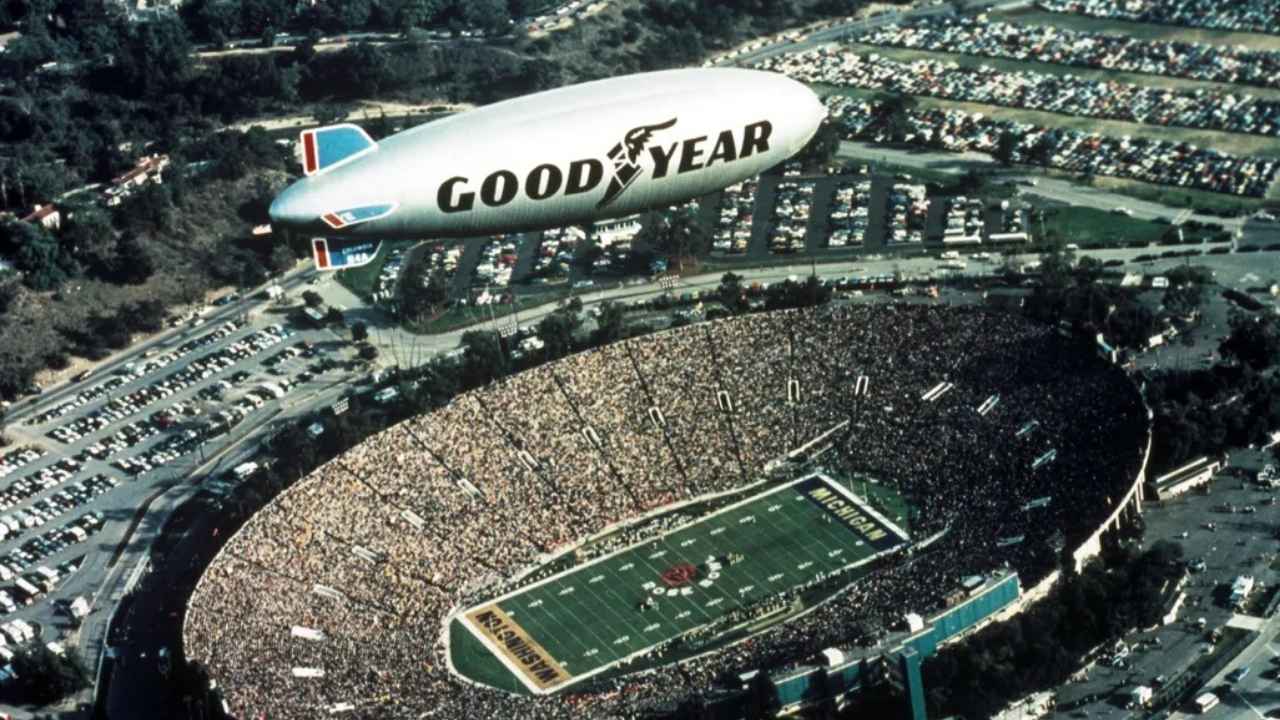How the Goodyear Blimp became synonymous with sports
It was never supposed to be a sports thing. But somewhere between World War II and the Rose Bowl, the Goodyear Blimp became a floating icon—trading in helium and horsepower for sideline fame and prime-time flyovers.

The Goodyear Blimp, a seemingly omnipresent major sporting event attendee, with appearances at the first Super Bowl, several Olympics, and the Indy 500, turned 100 years old last week.
But, similar to a 40-year-old finance major who left a cushy VP job on Wall Street to become an aspiring Vegas DJ, its original purpose was quite different.
Sports weren’t even a part of the equation. The Akron-based tire company launched an aeronautics department in 1910—hoping that wealthy Americans would adopt blimps for leisure and luxury travel, aka an air yacht of sorts—with its first blimp taking flight 15 years later.
The company subsequently made helium-filled floating machines for the US Navy in WWII. Then, as a market for frustratingly slow air travel failed to emerge, the Goodyear Blimp made its first appearance at a sporting event—the 1955 Rose Bowl.
Sports are cool, buy tires
The now-iconic sports + Goodyear Blimp partnership flourished, as broadcasters and the tire company realized they could fruitfully scratch each other’s backs.
- Goodyear works primarily with TV networks, not the leagues or event organizers, and money almost never exchanges hands for the blimp’s services, Front Office Sports reports.
- Instead, the blimp provides aerial coverage of the event in return for publicity in the form of in-game graphics for at least 10 seconds per hour.
- This means when deciding whether to attend sporting events, Goodyear performs a simple calculation: the cost of running a commercial vs. operating the blimp for the duration of the event.
By the numbers: The Goodyear Blimp is ~250 ft long, bigger than a Boeing 747, and holds three Olympic-sized swimming pools’ worth of helium. It typically cruises at 30-40 MPH, with a max speed of 70+ MPH.
Looking ahead…Goodyear owns four of the world’s 20 operational blimps, with plans to expand their presence to major non-sporting events, including concerts and music festivals. But first—expect an appearance at this weekend’s College World Series games.


